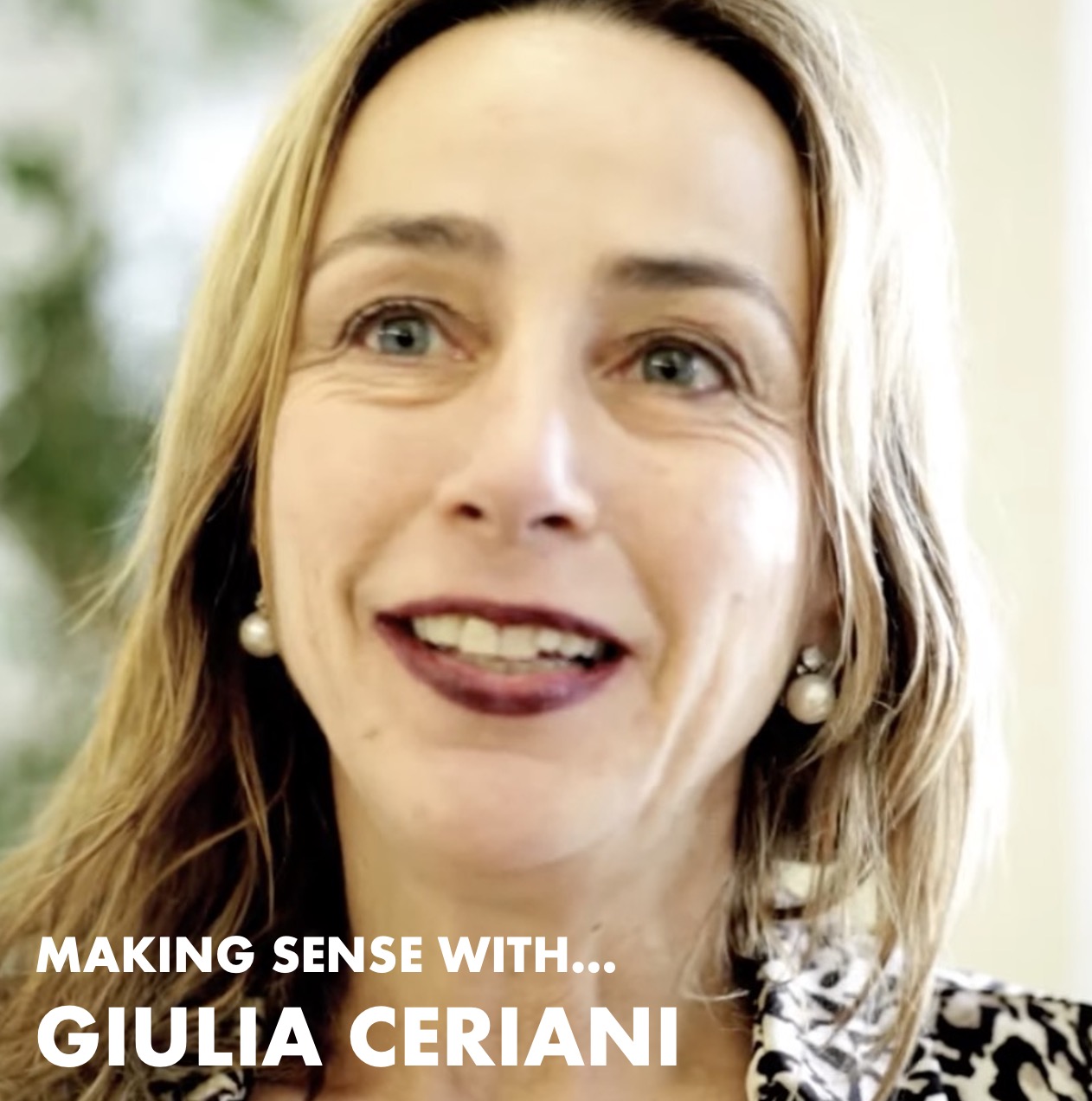Photo courtesy of Giulia Ceriani
What makes a semiotician tick? SEMIOVOX’s Josh Glenn has invited his fellow practitioners in the field of commercial semiotics, from around the world, to answer a few revealing questions.
Milan…
SEMIOVOX
When you were a child/teen, how did your future fascination with symbols, cultural patterns, interpreting “texts,” and getting beneath the surface of daily life manifest itself?
GIULIA CERIANI
I have always felt the need to bring order to the world around me, while at the same time being strongly attracted to pursuing multiple paths. My interest in, and indeed my instinct for semiotics, stems from these impulses.
SEMIOVOX
Describe your first encounter(s) with the theory and practice of semiotics.
GIULIA CERIANI
From 1979–1984, I was enrolled in the Università di Bologna’s DAMS [discipline delle arti, della musica e dello spettacolo], an avant-garde degree course co-founded by Umberto Eco. My first encounter with the discipline was via Eco and his assistants. Then I earned a doctorate at EHESS [Ecole des Hautes Etudes en Sciences Sociales] in Paris, studying Sciences of Language with Algirdas Greimas and Jean Petitot.
From the beginning, the great attraction of semiotics, for me, has always been the opportunity — and tools — it offers to take a “second look” at seemingly obvious phenomena. Once we “break the surface” of what’s given, we learn that no phenomenon is ever obvious.
SEMIOVOX
How did you find your own way to doing semiotics?
GIULIA CERIANI
I wanted to develop my own way of applying the discipline’s theoretical teachings in daily life. The analysis of marketing, consumption, and trends has allowed me to do so. In my practice, I always try to strike a balance between in-depth analysis and applicability.
SEMIOVOX
What are the most important attributes of a good semiotician?
GIULIA CERIANI
The ability to read manifestations as organic structures, respecting texts and their power without any recourse to “authors.” In other words, observing the basic principle of immanence [i.e., the meaning of the phenomenon is within the phenomenon].
SEMIOVOX
What three books about semiotics have you found the most useful and enlightening in your own work?
GIULIA CERIANI
- A.J. Greimas and Joseph Courtes’s Semiotics and Language: An Analytical Dictionary. My bible.
- Jean-Marie Floch’s Semiotics, Marketing and Communication; Beneath the Signs, the Strategies. My applicative directions.
- Greimas’s De l’imperfection. My vision.
SEMIOVOX
When someone asks you to describe what you do, what is your “elevator pitch”? How do you persuade a skeptical client to take a chance on using this tool?
GIULIA CERIANI
It works! Because semiotic analysis takes nothing for granted.
SEMIOVOX
What specific sorts of semiotics-driven projects do you find to be the most enjoyable and rewarding?
GIULIA CERIANI
I like a challenge, and the most challenging sort of project is where semiotics meets trend analysis. Which is why I’ve developed my unique Trend Monitor® methodology, which monitors nine business categories across twelve countries via everything from advertising and brand communications to industry fairs, exhibitions, and more.
I should also mention a very interesting piece of strategic research that Jean-Marie Floch and I undertook in 1994 — the goal being to understand the political future of Italy. It was a blind experiment, so we ourselves didn’t know the name of the person whom we predicted to become the new prime minister… but it was Silvio Berlusconi.
SEMIOVOX
What frustrates you about how semiotics is practiced and/or perceived, right now?
GIULIA CERIANI
Our methodology is a powerful mechanism for “reading” the world! So it’s frustrating whenever I see it trivialized and vulgarized, for example via an automatic and unimaginative use of the semiotic square.
Also, those of us who work in applied semiotics have the unique ability to help semiotics renew its theoretical apparatus… I wish that more of us would do so.
SEMIOVOX
Peirce or Saussure?
GIULIA CERIANI
Saussure, because his work laid the groundwork for the immanent analysis of texts. Building on Saussure, Hjelmslev and Greimas’s stratified conception of texts is key.
Others who’ve influenced my work include: [French sociologist] Eric Landowski, for his socio-semiotics perspective; Jean-Marie Floch, whom I consider my mentor in semiotics applied to the consumption universe; and [Italian semiotician] Paolo Fabbri, for his always inspiring lessons.
SEMIOVOX
What advice would you give to a young person interested in this sort of work?
GIULIA CERIANI
- Read the discipline’s basic texts in the original — no summaries, no manuals.
- Always keep in mind the differential and comparative perspective of the conception of “value” in semiotics [i.e., Saussure’s insight that the content of a sign is determined and delimited by other signs], thus avoiding confusing textual analysis [i.e., analyzing texts as structured wholes in order to investigate the latent conceptual structure] with decoding [i.e., interpretation by codes].
MAKING SENSE series: MARTHA ARANGO (Sweden) | MACIEJ BIEDZIŃSKI (Poland) | BECKS COLLINS (England) | WHITNEY DUNLAP-FOWLER (USA) | IVÁN ISLAS (Mexico) | WILLIAM LIU (China) | SÓNIA MARQUES (Portugal) | CHIRAG MEDIRATTA (India / Canada) | SERDAR PAKTIN (Turkey / England) | MARIA PAPANTHYMOU (Greece / Russia) | XIMENA TOBI (Argentina) | & many more.
Also see these series: COVID CODES | SEMIO OBJECTS | MAKING SENSE | COLOR CODEX


